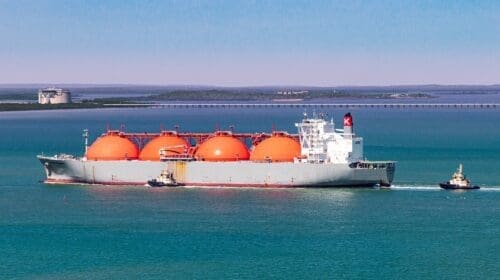Hurricane Harvey continues to unleash its wrath on the Texas and Louisiana coast, creating serious problems for energy consumers and producers.
Since Aug. 25, Harvey’s high winds and heavy rains have caused the temporary closing of some oil and natural gas exploration and production in the Gulf of Mexico and onshore southern Texas, but the major problems have been associated with the closing of many oil refineries.
According to the Oil and Gas Journal, the U.S. Bureau of Safety and Environmental Enforcement (BSEE) reported that 18.5 percent of U.S. gulf oil production, or 323,760 barrels per day (b/d) is shut-in as of Aug. 30. BSEE also estimates that 18.98 percent, or 611 MMcfd, of U.S. natural gas production in the Gulf has been halted.
Personnel remain evacuated from 102 production platforms in the Gulf, 13.84 percent of the 737 manned platforms. Personnel remain evacuated from five offshore rigs, or 50 percent of the rigs of this type previously operating in the Gulf.
“In South Texas, drilling, completion, and production activities are expected to begin slowly ramping up through this week as operators assess damage to their assets and remobilize personnel,” the Oil and Gas Journal report stated. “ConocoPhillips, EOG Resources Inc., and Baytex Energy Corp. are among firms reported to be resuming activity in the region.”
Even though the hurricane did not reach the oil-rich Permian Basin of West Texas, there have been reports of problems getting crude oil transported out by pipeline to the Gulf coast because of distribution and refinery problems.
All six refineries in the Corpus Christi area, seven refineries in the Houston-Galveston area, and two refineries in the Beaumont-Port Arthur area were shut down or in the process of shutting down, according to public reports. These refineries have a combined refining capacity of 3.87 million b/d, equal to 39 percent of total Gulf Coast (PADD 3) refining capacity and 20.9 percent of total U.S. refining capacity.
Five more refineries in the Gulf Coast region with a total capacity of 1.5 million b/d were operating at reduced rates.
The Port Arthur-Lake Charles refining hub along the Texas-Louisiana border with a combined capacity of 2.3 million b/d has received large amounts of rain. Some 20 oil tankers carrying 15.3 million barrels of imported crude near Texas ports were unable to offload due to port closures.
All major ports along the Texas Gulf Coast except Brownsville were closed as of Aug. 31, but the Port of Corpus Christi and Galveston were expected to resume operation soon.
With the backlog of crude oil supplies, prices for crude oil on the New York Mercantile Exchange (NYMEX) closed lower by $0.48 to $45.96 on Aug. 30. Gasoline prices, on the other hand, gained $0.1014 to settle at $1.8847 per gallon.
Refinery runs ahead of the storm were high, which has prevented much larger spikes in gasoline prices.
There were reports of some service stations in Texas being low or temporarily out of gasoline, but officials cautioned consumers to stay calm. When consumers panic and top off their vehicles’ tank, they add to the shortage, creating even more pressure on price.
The refineries on the Gulf coast have an oversupply of crude oil. When the refineries become operational again, the undersupply of refined products (gasoline) will be replenished.
Alex Mills is President of the Texas Alliance of Energy Producers. The opinions expressed are solely of the author.
Alex Mills is the former President of the Texas Alliance of Energy Producers. The Alliance is the largest state oil and gas associations in the nation with more than 3,000 members in 305 cities and 28 states.












